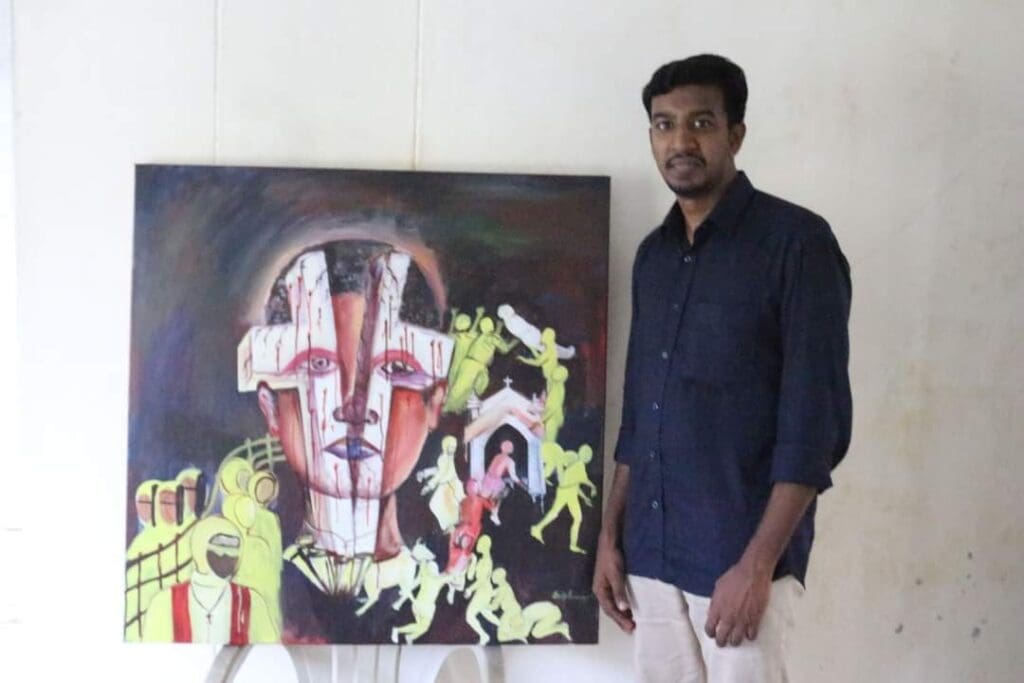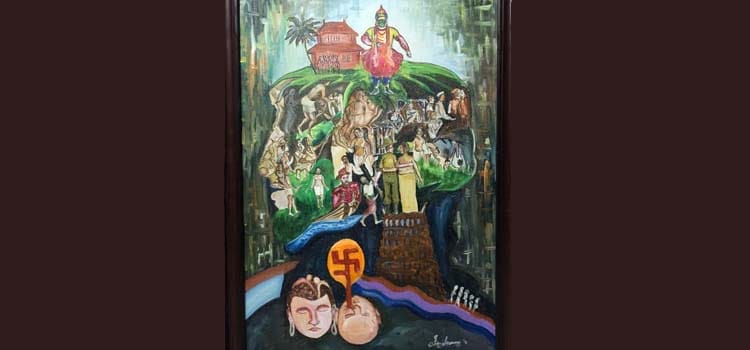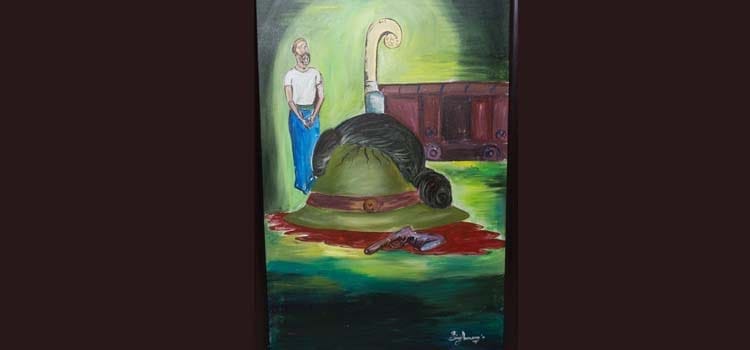
Last week, I had the privilege of taking my students from the Ibn Haldun Institute of Social Sciences to see the captivating exhibition of Ben J. Anthrayos’ paintings at the Calicut Art Gallery. The artwork wasn’t just visually arresting; it sparked a whirlwind of discussions that left a lasting impression on all of us.
As we entered the gallery, we were immediately drawn to the bold colors and symbolism that dominated Ben’s canvases. One piece, in particular, caught our eye: “Sheela.” It depicted a woman, her gaze unwavering, seemingly reclaiming her narrative. This powerful image ignited a conversation about the role of art in challenging societal norms. We delved into the ideas of Gilles Deleuze and Laura Marks, pondering how Ben’s work unfolded before us, brimming with metaphors that questioned the status quo.
The concept of “unfolding” resonated deeply. We explored the way historians, much like curators in an exhibition, select details from the vast expanse of the past to shape our understanding of the present. But what about the unseen narratives, the silenced struggles? This is where Ben’s artwork truly shines.
Kerala’s history, we realized, has often been dominated by upper-caste narratives, leaving the experiences of Dalit and Christian communities relegated to the shadows. Ben’s paintings challenged this linear perspective. They offered a counter-history, a vibrant tapestry woven with the threads of resistance from marginalized communities.


Another powerful piece, “Karup,” served as a stark reminder of the violence that lurks beneath the surface of Kerala’s idyllic image. The vivid portrayal of the subjugation of Buddhist and Jain traditions, the oppression of marginalized groups, and the unholy alliance between Brahminical power and colonial forces left us speechless.
We moved on, each painting sparking a new discussion. “Malabari” shattered the simplistic portrayal of Malabar Mappila struggles, forcing us to confront the complexities of their resistance against the intertwined forces of colonialism and upper-caste elites. Works like “Kall,” “Nichim,” “Panchami,” and “Fanatic” subtly unveiled the often-overlooked interactions between underprivileged communities and religious missionaries.


Professor YS Alone’s insights on “protected ignorance” in language and reorientation in India added another layer to our appreciation of Ben’s work. The concept of “protected ignorance” refers to the tendency to uphold established narratives, often unconsciously, without considering alternative perspectives. Through his art, Ben challenges this very notion. His paintings confront viewers with the limitations of dominant historical narratives and urge them to acknowledge the experiences of marginalized communities that have been silenced or ignored. Professor Alone argues that “modernist painters have not addressed the issue of caste in their pictorial representation, as their pedagogical persuasions and political understandings would prevent them from considering a different approach.” Ben’s work stands in stark contrast to this. He doesn’t shy away from portraying the complexities of caste and its impact on Kerala’s social fabric.
Ben J. Anthrayos’ exhibition wasn’t just an art viewing; it was a journey of discovery. It challenged us to see Kerala’s past through a fresh lens, one that acknowledged the struggles and triumphs of those who have been silenced for far too long. As we left the gallery, my students and I carried with us a newfound appreciation for the power of art to transform, to question, and to inspire social change. It was a reminder that the stories we choose to tell, and the art we choose to create, have the power to reshape the very fabric of our history.
Shihas H is the Editor of Campus Alive, a Malayalam language academic magazine. His passion for artistic expression extends beyond editorial work, as he is also a curator, art writer, and facilitator actively involved in the art community.



